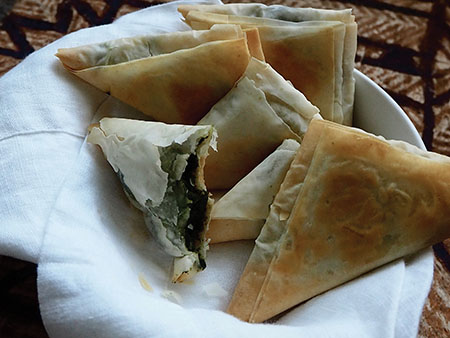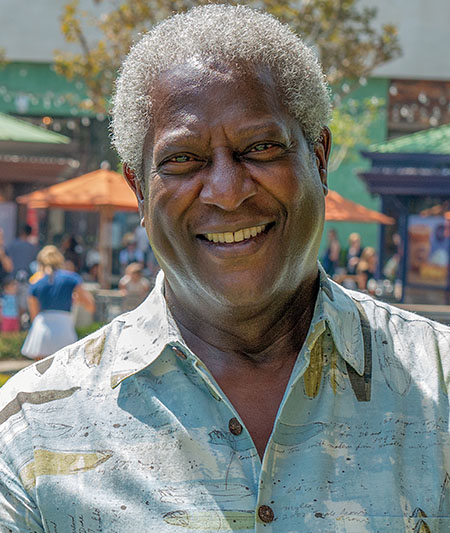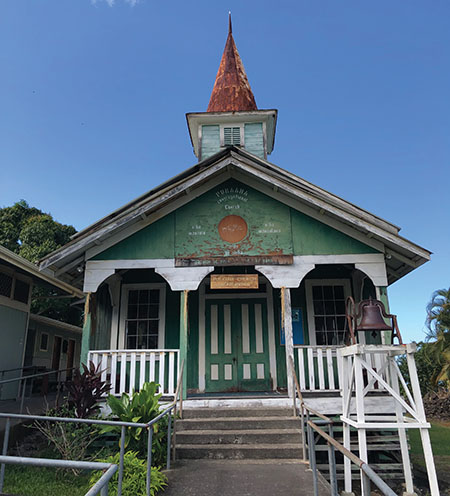
Hawai‘i Island’s Most Prolific Church Builder: Rev. John D. Paris
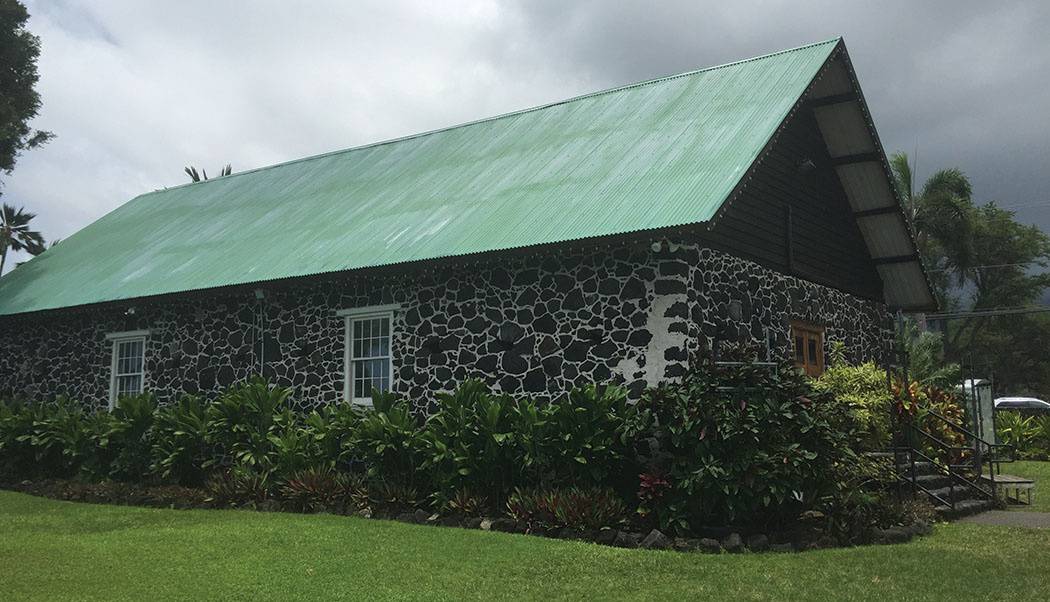
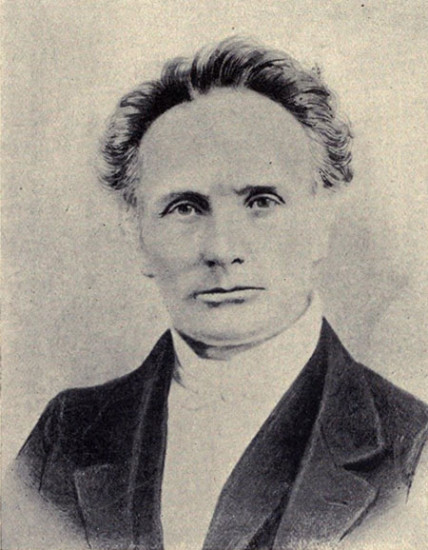
By Denise Laitinen
Dotting the landscape along main highways and backcountry roads, historic churches in West Hawai‘i range from small wooden chapels to impressive stone structures. It may surprise people to learn the same man, the Reverend John D. Paris, built many of these churches.
A Christian missionary originally from Virginia, Rev. Paris was a prolific church builder, personally building or overseeing the construction of at least 10 churches across a large portion of the western and southern districts of Hawai‘i Island during the mid-1800s. More than 150 years later, many of his churches still stand today with active congregations holding weekly services. In some instances, Paris-built churches have stood the test of time because the minister developed innovative techniques to withstand local weather conditions. He also used different building materials depending on the location of a given church.
Interesting to note, Rev. Paris almost did not come to Hawai‘i Island at all. Born in 1809, John Davis Paris attended college in Indiana, then received a graduate degree from Bangor Theological Seminary in Maine in 1839. The following year, in October 1840, he married Mary Grant and a month later the newlyweds set sail for Honolulu on the Gloucester as part of the ninth company sent by the American Board of Commissioners for Foreign Missions with several other young missionaries.
Arriving on O‘ahu in 1841, the minister and his wife were supposed to continue their journey with another couple from the Gloucester to their assigned mission in Oregon. However, those plans fell through and the newlyweds were instead sent to the Ka‘ū district on Hawai‘i Island.
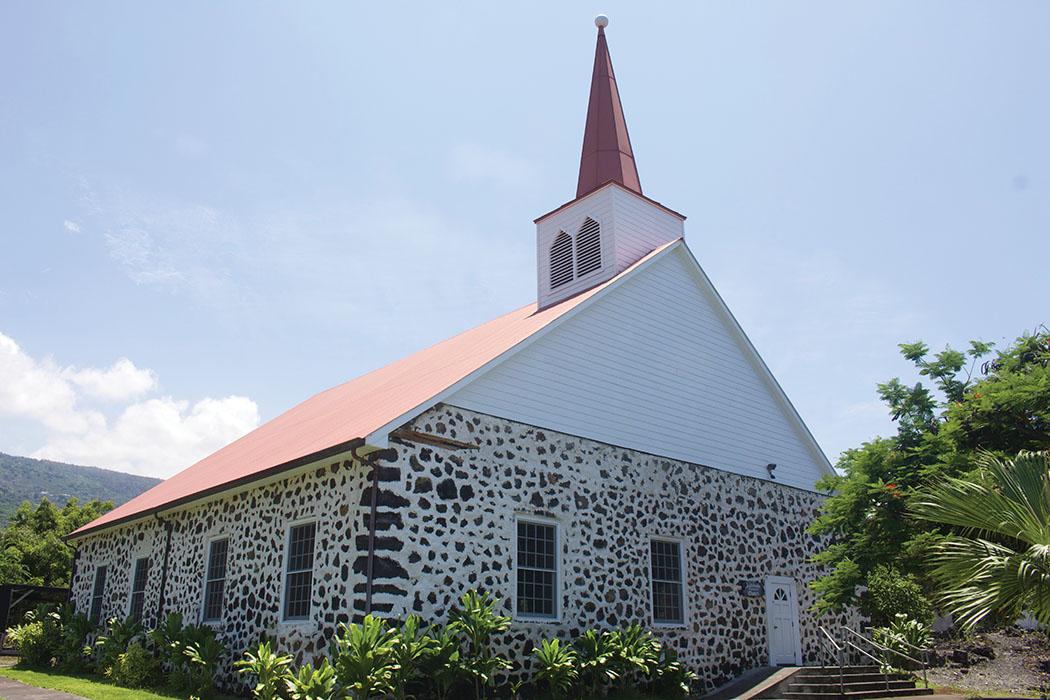
Christianity, Churches, and Districts
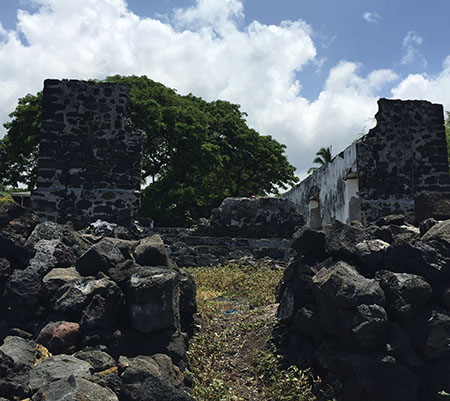
Christian missionaries first arrived on island in 1820, inspired by Ka‘ū resident Henry ‘Ōpūkaha‘ia, who had converted to Christianity while attending Yale and died before he could fulfill his plans of returning to Hawai‘i Island as a minister. It was fitting that Rev. Paris would wind up living in the same district as the person who inspired missionaries to come to Hawai‘i. Indeed, Rev. Paris would, in time, build a small chapel at Punalu‘u in honor of ‘Ōpūkaha‘ia’s birthplace.
As soon as the couple was settled in their new home, Rev. Paris set about building a sizable stone church in Wai‘ōhinu called Kauahā‘ao Congregational Church, named after a nearby spring. The church was later destroyed by a 7.9 magnitude earthquake in 1868, the largest quake in the island’s history. It was replaced with a wooden church that was subsequently demolished 118 years later in 1998 due to termite damage and rot.
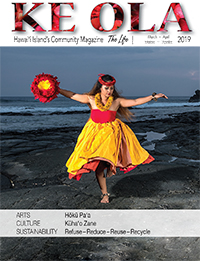
While Rev. Paris was building churches, the couple’s family grew, with Mary Grant Paris giving birth to two daughters, Anna and Mary. The Paris’ time in Hawai‘i was unfortunately cut short by the death of Mary Grant Paris in 1847. With two young children to care for, Paris and his daughters returned to the mainland where he married his second wife, also named Mary. He and Mary Carpenter were married in New York in September 1851.
The call of the islands was strong, and Rev. Paris and his new wife and his daughters decided to return to Hawai‘i shortly after tying the knot. This time, the minister was assigned to a mission in the Kona district. It was during this second period of living on the island—a stint that would last decades—that Paris was truly industrious, building churches throughout the district.
Soon after returning in 1852, Paris set about rebuilding Kahikolu Congregational Church in Napo‘opo‘o. The original large church overlooking Kealakekua Bay was built in 1839/1840 on land donated by Chiefess Kapiolani. It had fallen into disrepair after years without a minister. Paris spent three years building a smaller church, using the width of the old church as the length of the new chapel. You can still see the remnants of the old church adjacent to Kahikolu.
Kahikolu Church was significant for many reasons. When construction was completed in 1855, it was the largest church on the island. To this day, it remains one of the oldest stone church buildings in the state.
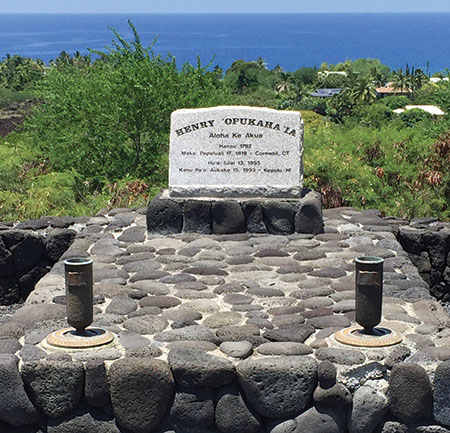
In an interesting twist of fate, Rev. Paris and Henry ‘Ōpūkaha‘ia share a history with this church, as well. Through more than a century and a half of use, the church had been damaged in numerous earthquakes over the years. It underwent a long restoration and renovation during the 1980s–1990s. In 1993, at the request of Henry ‘Ōpūkaha‘ia’s descendants, Henry’s remains were moved from Connecticut, where he had died, and reinterred at Kahikolu. A marker on the church grounds explains Henry’s role in bringing Christianity to Hawai‘i.
As was the case when he was building Kauahā‘ao Congregational Church, Rev. Paris was now busy growing his second family while he built more churches. He also built a home where he and Mary Carpenter Paris welcomed a daughter Ellen (called Ella) and a son, John Davis Jr., before Kahikolu was completed.
Rev. Paris was a pioneer in building churches and in the materials used to construct them. He built a kiln at his house to heat coral that was then made into a lime mortar. Using koa timbers and stone with the mortar proved to be a far stronger composite than anything used previously, and he used this technique for churches built closer to the ocean. When building churches further upslope, he used wood instead.

A year after completing Kahikolu, Paris built Hale Halawai o Holualoa along the shoreline of Holualoa Bay. Now known as the Living Stones Church, the stone church and small cemetery can be seen while driving along Ali‘i Drive.
It is said that church members in the early years of Hale Halawai o Holualoa attended services by paddling in canoes, landing at the sandy beach nearby, and pulling their canoes ashore.
Further down Ali‘i Drive, across the street from Kahalu‘u Beach Park, you can see the ruins of Helani Congregational Church, which Paris built in 1861 on top of the ruins of ‘Ohi‘amukumuku Heiau. The seaside church fell into disrepair after most of the congregation moved upland, and a wooden church was built along Mamalahoa Highway in Holualoa-Keauhou Mauka. Helani Church still has an active ministry to this day.
Other shoreline churches built by Rev. Paris include the original Puka‘ana Congregational Church, built of stone and coral near the coastline in Keālia. The congregation later built a larger church out of wood upland fronting Mamalahoa Highway.
Rev. Paris went on to build several other churches, including Central Kona Union Church in Kealakekua, Mauna Ziona Congregational in Kalaoa (originally built in Kohanaiki where it was called Kekaha Church), Hau‘oli Kamana at Miloli‘i, Ho‘ike‘ana at Ka‘ohe, and the last church he built, Lanakila Church in Lehu‘ula, just north of Kainaliu, was completed in 1867.
A few years after completing Lanakila Church, Rev. Paris and Mary left Kona for Honolulu where he established the theology department of the North Pacific Institute. Yet again, Hawai‘i Island called Rev. Paris home, and he retired to Kona just four years later, in 1874.
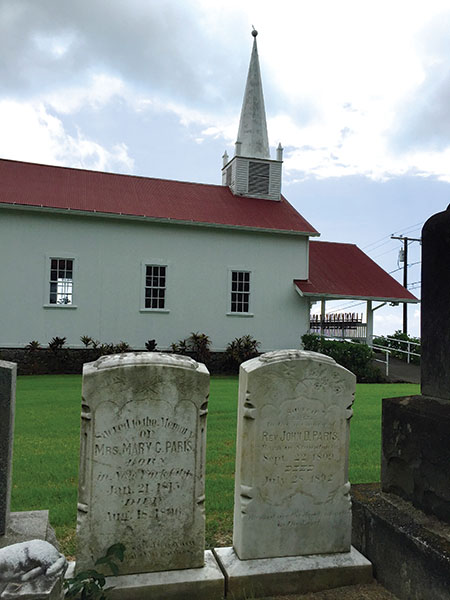
Rev. Paris died in 1892 and Mary Carpenter Paris, in 1896. The couple is buried in the cemetery next to Lanakila Church. To this day, many of Paris’ descendants still live on the island. Rev. John D. Paris’ great-grandson, William Johnson Paris, Jr., known as “Uncle Billy,” became a minister at Lanakila Church. Uncle Billy Paris died in 2015 at the age of 92.
Many of the churches that Rev. Paris built, including Kona Union Church, Helani, Lanakila, Kauaha‘ao, Kahikolu, Hale Halawai o Holualoa, and Mauna Ziona are still active congregations. Indeed, some of the congregations, such as Puka‘ana Church, have had the same families attending for five, six, or even seven generations.
It is a testament to Rev. Paris and the generations of parishioners of the churches he built, that these historic churches in West Hawai‘i continue to survive and thrive. ❖
For more information:
keolamagazine.com/people/uncle-billy-paris
keolamagazine.com/church/pukaana-church
Mahalo Clark Realty Corp.—Home/Building Story Sponsor
